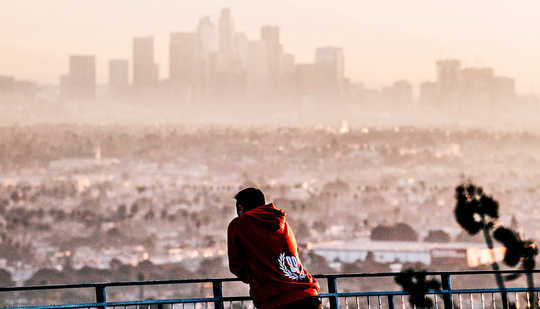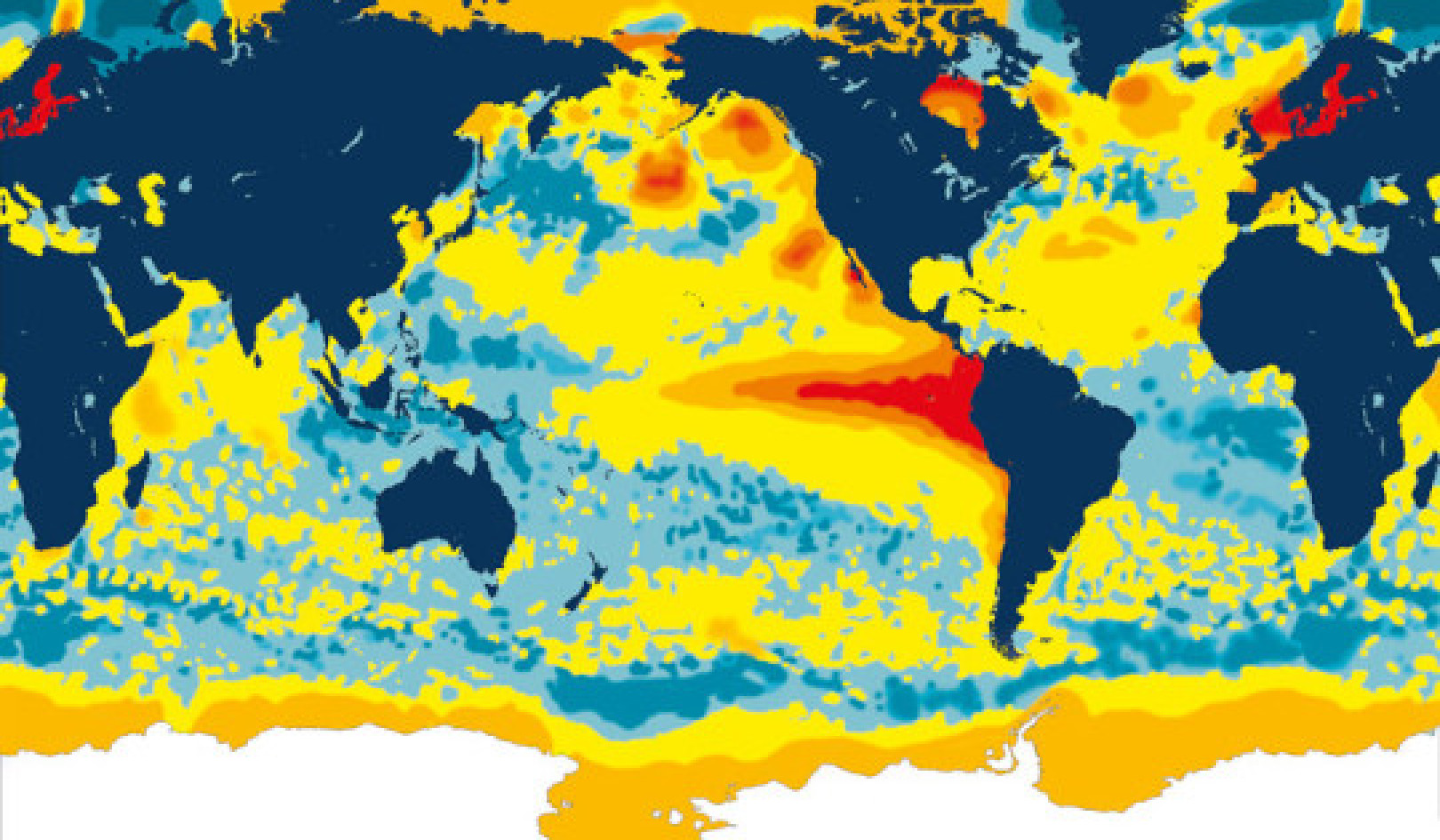
(Credit: Nathan Dumlao/Unsplash)
Poor on-the-ground monitoring makes it impossible to know which city is the world’s most polluted, according to new research.
“I often see rankings of the most polluted city in the world,'” says Randall Martin, professor in the energy, environmental, and chemical engineering department in the McKelvey School of Engineering at Washington University in St. Louis.
“These rankings are misleading,” he says, “because there is insufficient information to know.”
In a paper in Atmospheric Environment: X, Martin outlines the extent of the gap between what researchers know and don’t know about on-the-ground levels of fine particulate matter, also known as PM2.5.
The number refers to the size of certain particulates in the air that constitute pollution—they are 2.5 microns and smaller; for scale, a human hair is about 70 microns in diameter. These particles can be composed of anything, such as dust and industry byproducts. Because of their size, they can travel through the body’s respiratory tract and deposit in the lungs.
The health impacts of PM2.5 start with cardiovascular damage and get worse from there. The Organisation for Economic Cooperation and Development estimates worldwide, the cost associated with premature deaths from pollution will rise from $3 trillion in 2015 to $18-25 trillion by 2060.
Lack of good data
Understanding the amount of pollution in the air requires on-the-ground monitoring, but many cities—ostensibly some with high PM2.5 levels—have no monitoring at all. In India, for example, there is just one monitor for every 6.8 million people. Such sparse monitoring fails to represent pollution variability.
Martin and colleagues found that just about 9% of the world’s population lives in areas that have more than three monitors per million people. About 18% of the population live in areas without monitoring.
“Although the health effects of PM2.5 are valued at a few percent of global GDP, PM2.5 is grossly under-monitored,” Martin says. “The difference between the importance of this measure and the level of ground-based monitoring is shocking.”
Beyond mitigating health concerns, a better understanding of pollution on the ground is important for several reasons. For Martin, whose research sits at the intersection of remote sensing and global modeling, having accurate data is the only way to develop accurate models.
“Part of our analysis involves relating what satellites measure to ground-level PM2.5,” he says. “If we relied only on ground-based monitors, we would have insufficient information.”
Pinpointing the most polluted city
In order to improve the ground-level data, Martin and colleagues propose a robust “integrated monitoring framework” composed of different types of monitoring equipment focused on the most densely populated areas, or even on those most prone to variability. They calculate that in order to achieve a goal of one monitor per million people, thousands of new monitors will need to come online.
In addition, Martin and colleagues suggests this framework should include ground-based aerosol measurements, innovative low-cost monitors, mobile monitoring, and measurements at different points along the vertical (by aircraft, for example). Integrating these systems would not only help researchers gain a more comprehensive picture of the PM2.5 levels on the ground, but would assist with air quality forecasting and help to improve atmospheric models.
“The ability to identify the location of the most polluted city in an indicator of scientific progress,” Martin says. “It is important to be able to answer basic questions about something this important. The drive to overcome this challenge speaks to something fundamental about our knowledge of the world around us.”
Support for the work came from the Natural Sciences and Engineering Research Council of Canada.
Source: Washington University in St. Louis
Related Books
Life After Carbon: The Next Global Transformation of Cities
by Peter Plastrik , John Cleveland The future of our cities is not what it used to be. The modern-city model that took hold globally in the twentieth century has outlived its usefulness. It cannot solve the problems it helped to create—especially global warming. Fortunately, a new model for urban development is emerging in cities to aggressively tackle the realities of climate change. It transforms the way cities design and use physical space, generate economic wealth, consume and dispose of resources, exploit and sustain the natural ecosystems, and prepare for the future. Available On Amazon
The future of our cities is not what it used to be. The modern-city model that took hold globally in the twentieth century has outlived its usefulness. It cannot solve the problems it helped to create—especially global warming. Fortunately, a new model for urban development is emerging in cities to aggressively tackle the realities of climate change. It transforms the way cities design and use physical space, generate economic wealth, consume and dispose of resources, exploit and sustain the natural ecosystems, and prepare for the future. Available On Amazon
The Sixth Extinction: An Unnatural History
by Elizabeth Kolbert Over the last half-billion years, there have been Five mass extinctions, when the diversity of life on earth suddenly and dramatically contracted. Scientists around the world are currently monitoring the sixth extinction, predicted to be the most devastating extinction event since the asteroid impact that wiped out the dinosaurs. This time around, the cataclysm is us. In prose that is at once frank, entertaining, and deeply informed, New Yorker writer Elizabeth Kolbert tells us why and how human beings have altered life on the planet in a way no species has before. Interweaving research in half a dozen disciplines, descriptions of the fascinating species that have already been lost, and the history of extinction as a concept, Kolbert provides a moving and comprehensive account of the disappearances occurring before our very eyes. She shows that the sixth extinction is likely to be mankind's most lasting legacy, compelling us to rethink the fundamental question of what it means to be human. Available On Amazon
Over the last half-billion years, there have been Five mass extinctions, when the diversity of life on earth suddenly and dramatically contracted. Scientists around the world are currently monitoring the sixth extinction, predicted to be the most devastating extinction event since the asteroid impact that wiped out the dinosaurs. This time around, the cataclysm is us. In prose that is at once frank, entertaining, and deeply informed, New Yorker writer Elizabeth Kolbert tells us why and how human beings have altered life on the planet in a way no species has before. Interweaving research in half a dozen disciplines, descriptions of the fascinating species that have already been lost, and the history of extinction as a concept, Kolbert provides a moving and comprehensive account of the disappearances occurring before our very eyes. She shows that the sixth extinction is likely to be mankind's most lasting legacy, compelling us to rethink the fundamental question of what it means to be human. Available On Amazon
Climate Wars: The Fight for Survival as the World Overheats
by Gwynne Dyer Waves of climate refugees. Dozens of failed states. All-out war. From one of the world’s great geopolitical analysts comes a terrifying glimpse of the strategic realities of the near future, when climate change drives the world’s powers towards the cut-throat politics of survival. Prescient and unflinching, Climate Wars will be one of the most important books of the coming years. Read it and find out what we’re heading for. Available On Amazon
Waves of climate refugees. Dozens of failed states. All-out war. From one of the world’s great geopolitical analysts comes a terrifying glimpse of the strategic realities of the near future, when climate change drives the world’s powers towards the cut-throat politics of survival. Prescient and unflinching, Climate Wars will be one of the most important books of the coming years. Read it and find out what we’re heading for. Available On Amazon
From The Publisher:
Purchases on Amazon go to defray the cost of bringing you InnerSelf.comelf.com, MightyNatural.com, and ClimateImpactNews.com at no cost and without advertisers that track your browsing habits. Even if you click on a link but don't buy these selected products, anything else you buy in that same visit on Amazon pays us a small commission. There is no additional cost to you, so please contribute to the effort. You can also use this link to use to Amazon at any time so you can help support our efforts.




























